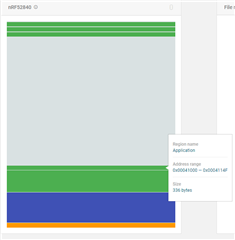Hi i am working on project where i need to store logs on flash, i included nrf_storage and set start address 0x42000 and end address 0x50000 according to my application, my product contains softdevice, application and bootloader.... but when i try to read write or erase specific address it get stuck ... my application is based on FreeRTOS



